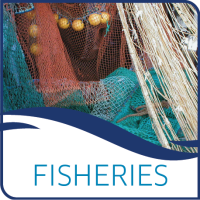The reported sea trials are part of the FISP funded CodSELect project. Apart from the current trials, the project involves a number of controlled laboratory tank trials conducted in the Marine Directorate’s facilities in the Marine Laboratory in Aberdeen as well as sea trials on board the chartered commercial fishing vessel Westro PD20. The trials took place on the Marine Directorate’s MRV Alba Na Mara between 18-30 May 2023 and were restricted to the East of Shetland, (majority of hauls between NE of Lerwick and SE of Fetlar island) due to weather conditions. The objective was to investigate whether artificial light can influence fish behaviour, with main focus on cod, and enhance escape through a square mesh panel (SMP) on the top panel of a SELTRA sorting box in the extension of the trawl. Instrumentation was monitoring turbidity and light levels. No significant differences in length effects and relative catch rates were observed for any of the analysed species.
Data and Resources
- 0723A Haul Datacsv
SurveyAcronym: Indicating project name. Allows merging with all other data...
Preview Download - 0723A Catch Length Distribution Data csv
SurveyAcronym: Indicating project name. Allows merging with all other data...
Preview Download - 0723A Catch Weight Datacsv
SurveyAcronym: Indicating project name. Allows merging with all other data...
Preview Download - 0723A LI192 Datacsv
SurveyAcronym: Indicating project name. Allows merging with all other data...
Preview Download - 0723A RBR Tu Datacsv
SurveyAcronym: Indicating project name. Allows merging with all other data...
Preview Download
| Field | Value |
|---|---|
| Publisher | |
| Modified | 2024-04-16 |
| Release Date | 2024-04-16 |
| Identifier | d2c0d7fb-8d5d-489e-b48a-f7180f4f4408 |
| Spatial / Geographical Coverage Area | POLYGON ((-2.13134765625 59.417662322218, -2.13134765625 60.004993907336, -0.791015625 60.004993907336, -0.791015625 59.417662322218)) |
| Temporal Coverage | 2023-05-18 to 2023-05-30 |
| Language | English (United Kingdom) |
| License | UK Open Government Licence (OGL) |
| Data Dictionary | The BT201 trawl extension was rigged with a SELTRA box incorporating a 300 mm SMP on the top panel, situated 8.7 metres from the codline. The bottom panel of the SELTRA was rigged with a 20 meter fibre optic (FO) cable illuminated by two 460nm (blue) Photosynergy SLS2500 LED light pod units, one attached on each end to produce uniform intensity output throughout the fibre length. The SLS2500 were initially powered by the 12V battery packs that are routinely used in MS RV trials and are made in house by MS. On the 5th day of the trials the battery packs were replaced by, the newly developed for the purposes of the CodSELect project, Photosynergy SBS5000 battery packs. The SBS5000 operated satisfactory and were deemed a suitable replacement to the existing MS battery packs with the additional advantage of being a fraction of the size and weight of the former. The FO cable was fitted along the length of an insert in the bottom panel of the SELTRA. Alternate hauls were conducted to form pairs with one haul being the control (light OFF) and the other the test (light ON). As fish numbers were abundant on the grounds each haul was limited to 30 minutes to minimise catch bulk. The net was towed at three knots with Scanmar units monitoring wing spread and a trawl-eye providing headline height during each haul. Hauls were conducted at depths approximately between 80 and 150 meters in typical Nephrops grounds fished by a scraper trawl. A LI-COR LI-192SA underwater quantum sensor, coupled on a LI-COR LI-1500 light sensor logger (in a custom made underwater housing by the MS engineering team), was rigged to collect real time PAR upwelling data to provide an indication of ambient light conditions, while turbidity was recorded by an RBR Solo3 logger equipped with a Seapoint turbidity sensor. The light units, battery packs, cameras and instrumentation were not wound onto the net drum as it could damage the equipment. During hauling the net was wound onto the drum up to the first attached unit, then the power block was used to bring the codend aboard using a dog rope. Large bins were used on deck to receive and store the catch from the codend. The catch was subsequently sorted into key species, weighed and individual total fish length measurements recorded. A total of 35 hauls were completed, 30 of which valid. |
| Contact Name | Marine Directorate |
| Contact Email | |
| Public Access Level | Public |


